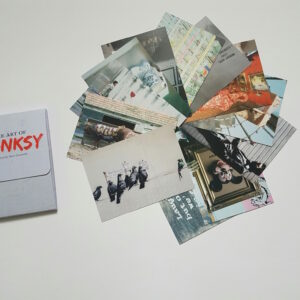Understanding Die Cut Cards: An Overview
Die cut cards are a fascinating and versatile printing innovation that has captured the interest of various industries. At its core, die cutting is a technique that involves cutting shapes from a material—most commonly paper or cardstock—using a specialized die. This die acts much like a cookie cutter, shaping the material into intricate designs that would be challenging to achieve with traditional printing methods.
The history of die cutting dates back to the early days of printmaking and leather-working, where simple shapes were cut manually. With advances in technology, the die cutting process has evolved dramatically. Today, modern machinery enables precision and consistency, allowing for the creation of highly intricate and detailed patterns. These technological advancements have opened new possibilities for designers and printers alike, making die cut cards increasingly popular.
A variety of materials can be utilized for die cut cards, each offering unique qualities. Standard options include different types of paper and cardstock, which are favored for their versatility and cost-effectiveness. For a premium touch, specialty finishes such as foil, embossing, and laminates can be applied. These finishes not only enhance the visual appeal but also add a tactile dimension to the cards, making them more engaging to the recipient.
Die cut cards are employed in numerous applications, serving both aesthetic and functional purposes. They are commonly used for business cards, which can benefit from distinctive shapes that capture attention and leave a lasting impression. Invitations, whether for weddings, corporate events, or parties, often feature die cut elements to convey a sense of uniqueness and elegance. Furthermore, die cut cards play a crucial role in packaging and marketing materials, adding a creative flair to product displays and promotional items.
In summary, die cut cards offer a blend of historical craftsmanship and modern technology, making them a compelling choice for various applications. Their ability to transform simple materials into extraordinary designs underscores their enduring popularity across different sectors. As we delve deeper into the world of die cut cards, understanding their foundational elements will enrich our appreciation of this innovative medium.
“`html
The Versatility of Shapes and Sizes in Die Cut Cards
Die cut cards offer a remarkable spectrum of shapes and sizes, allowing businesses and individuals to leverage their creativity to the fullest. Traditional shapes such as squares, rectangles, and circles have long been the mainstay in the card industry, providing a reliable foundation for various applications, from business cards to event invitations. However, the true charm of die cut cards lies in their ability to break free from conventional constraints, offering custom shapes tailored to any design requirement.
Imagine a business card shaped like your company’s logo, or a promotional event invitation taking the form of the product it’s advertising. The ability to craft such unique shapes adds a significant layer of visual appeal and functionality, making the cards not only a medium of information but an engaging tool for branding and communication. For example, custom die cut cards shaped like a house can be highly effective for real estate agents, instantly conveying the nature of their business and leaving a memorable impression on potential clients.
Designing and creating custom die-cut shapes involves a thoughtful process where functionality meets aesthetics. The first step is choosing the right size and shape based on the card’s intended use. For instance, a retail store might opt for a larger size to accommodate detailed product information, whereas minimalistic shapes might suit elegant wedding invitations. Once a shape is selected, designers work closely with cutting technology to ensure precision and quality, enhancing the final product’s impact.
The nuances of shape and size selection are well-illustrated by real-world examples. Take the case of a tech startup that chose triangular business cards to symbolize innovation and forward-thinking, setting them apart in a crowded marketplace. Or consider a luxury boutique opting for oversized, intricately shaped gift tags that reflect the exclusivity and attention to detail synonymous with their brand. These examples underscore how diverse shapes and sizes are not merely decorative elements but powerful tools in strategic brand positioning.
“`


